
Roots
Consider the hair that springs from your scalp, each coil and curve a testament to a story older than memory itself. For those whose hair bears the intricate patterns of textured strands, this connection to the past is more than metaphorical; it is a palpable inheritance. Our hair, beyond its physical form, holds within its very structure the echoes of ancestral wisdom, whispered through generations, about care, resilience, and strength. The journey into historical hair rituals, those ancient practices that bolstered textured strand strength, truly begins with understanding the fiber itself, a profound interaction between biology and enduring human ingenuity.
How did these forebears, without laboratories or microscopes, come to grasp the intrinsic needs of kinky, coily, and wavy hair? Their understanding was born of observation, passed down through the gentle, knowing hands of mothers, aunties, and village elders. They discerned that the elliptical shape of a textured hair shaft, distinct from the rounder forms often seen in other hair types, created specific points of vulnerability.
This natural architecture meant moisture could escape more readily, and the hair was susceptible to fracture if mishandled. Ancient custodians of hair knowledge understood this inherent fragility, and their rituals were designed to counteract these natural tendencies, nurturing the hair from its very source.

Anatomy of Resilient Hair
The foundation of a strong strand lies in its composition. Hair is primarily keratin, a protein. In textured hair, the way these keratin proteins arrange themselves, along with the unique disulfide bonds, contributes to its curl pattern. The historical hair practices that promoted strength often centered on supporting this very structure.
They were, in essence, early forms of biomimicry, adapting to the hair’s natural inclinations rather than trying to force it into submission. This respect for the hair’s inherent characteristics allowed for regimens that truly enhanced its fortitude.
Imagine the wisdom of ancient African communities, whose collective insight understood that dry hair is fragile hair. They recognized that the natural oils produced by the scalp struggled to travel down the spiraling length of a coiled strand. This biological reality prompted the adoption of regular oiling and moisturizing practices, some centuries old, that became cornerstones of hair care across the continent. Such practices were not merely cosmetic; they were deeply protective, a shield against the elements and a means to maintain hair’s structural soundness.
Each coil and curve of textured hair carries the deep wisdom of generations past, guiding us toward practices that honor its unique architecture and inherent resilience.

What Defines Textured Hair’s Structural Vulnerability?
The specific geometry of textured hair, with its numerous bends and twists along the shaft, means that the cuticle, the outer protective layer, is often raised at these curves. This raised cuticle allows moisture to escape more easily and makes the hair more prone to tangling and mechanical damage. Historically, rituals addressed this by providing external lubrication and protective measures, minimizing manipulation, and creating environments where the hair could retain its precious hydration. These practices, though varied geographically, shared a common aim ❉ to fortify the hair against the stresses of daily life and environmental exposure.
Consider the profound legacy of communal hair care, an aspect deeply connected to the strength of textured hair, not just physically, but socially. In many African cultures, the act of braiding or styling hair was a shared experience, a moment for storytelling and bonding. This communal care fostered a gentle approach to handling hair, reducing the harshness that can cause breakage. The inherent fragility of textured hair meant that forceful manipulation was detrimental, and the hands-on care within community settings promoted a more mindful and less damaging interaction with the strands.
The Himba Tribe in Namibia, for instance, has long utilized a distinctive paste of clay and cow fat, known as otjize, applied to their hair. This mixture serves not only as a traditional aesthetic but also as a powerful protector against sun and detangling. This tangible example highlights how ancient practices often provided comprehensive solutions, combining cosmetic appeal with practical hair health benefits that directly contributed to strand strength and preservation.

Ritual
The concept of hair care, for our ancestors, stretched far beyond mere cleansing; it was a series of sacred acts, a cadence of communal and personal moments that nurtured the hair from root to tip. These rituals, deeply interwoven with cultural heritage, were not arbitrary steps. They were deliberate, informed by centuries of observation and passed down as a living legacy, each practice contributing to the remarkable fortitude and vibrancy of textured hair. The focus was not simply on appearance but on the health and vitality that sustained the strands.
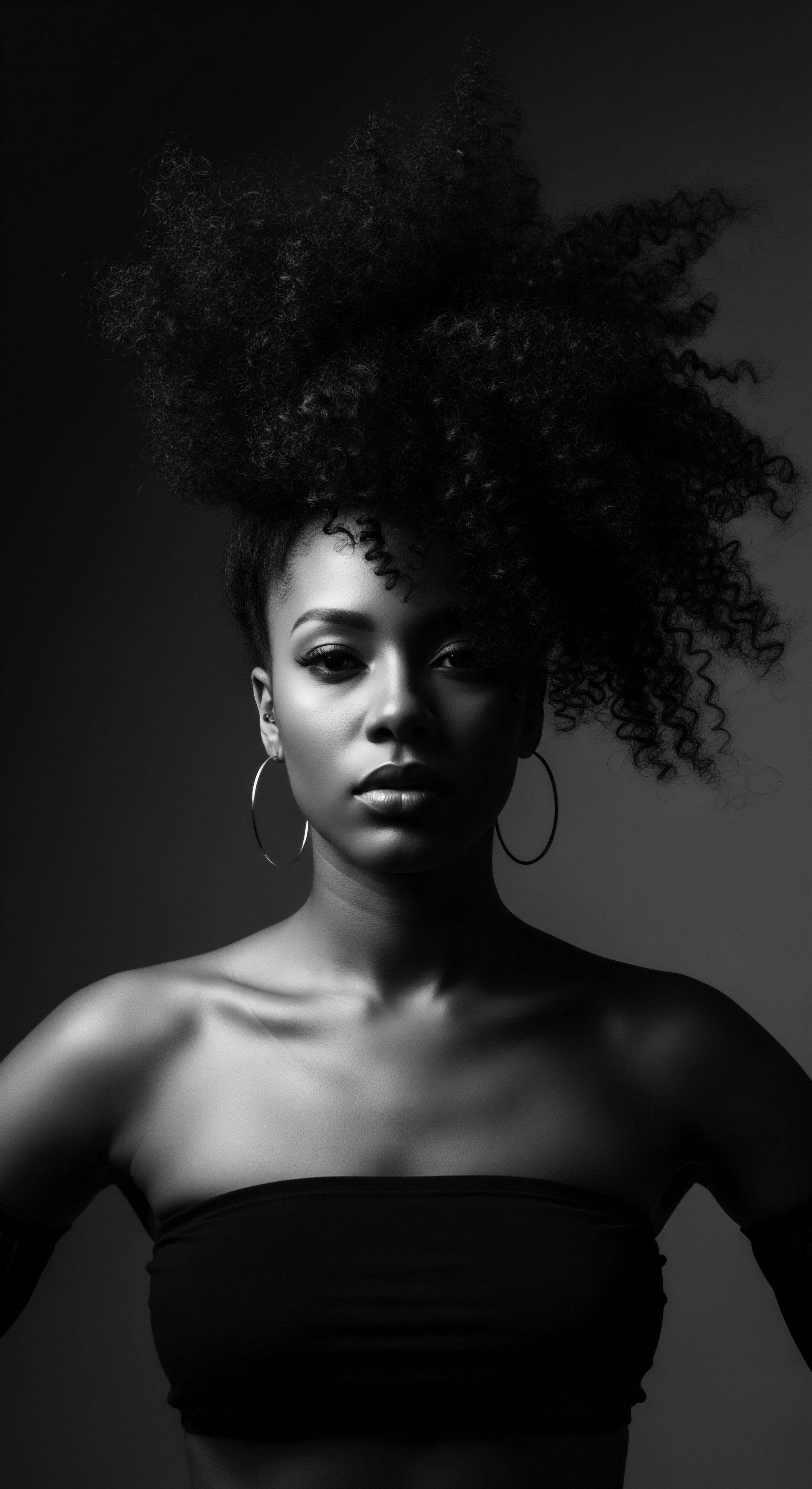
Protecting with Purpose
A central theme within historical textured hair care was the art of protective styling. These styles, which included various forms of braids, twists, and locs, minimized daily manipulation, shielding the hair from environmental stressors and reducing breakage. The ingenuity of these techniques was astounding, demonstrating a deep understanding of how to manage and preserve hair length. For example, cornrows, an Afro-centric style involving uniform, tightly woven braids close to the scalp, provided an architectural safeguard for the hair.
The history of braiding alone speaks volumes. Dating back as far as 3500 BCE, braiding served not only as a means of protection but also as a form of communication, indicating social status, tribal affiliation, marital status, or even religious beliefs. This dual function meant that hair was not merely adorned; it was thoughtfully sculpted for durability and purpose. The longevity of these styles meant less frequent manipulation, a quiet advantage for maintaining strand strength.

Ingredients from the Earth
The ingredients utilized in these ancient rituals were sourced directly from the earth, each with properties understood through generations of trial and lived experience. These natural elements offered nourishing, strengthening, and protective qualities, often targeting the specific challenges of textured hair.
- Shea Butter ❉ Extracted from the nuts of the shea tree, particularly in West Africa, shea butter was (and remains) a cornerstone of moisture and protection for textured hair. Its rich emollients seal in hydration, shielding strands from environmental harshness.
- Coconut Oil ❉ A staple in many parts of Africa and Asia, coconut oil penetrates the hair shaft, reducing protein loss and providing deep nourishment. Its application was a common method to strengthen hair fibers and guard against hygral fatigue.
- Chebe Powder ❉ Originating from the Basara Arab women of Chad, this blend of herbs and seeds is renowned for its ability to retain length by preventing breakage and locking in moisture, particularly beneficial for coily hair types.
Ancestral hair rituals, far from being mere vanity, were intricate systems of preservation, utilizing the earth’s bounty to fortify textured strands against the wear of time and environment.
These ingredients were often combined with water and other botanical elements to create masks, rinses, and scalp treatments. The purposeful layering of moisture and protective elements, even if not explicitly termed the “LOC method” as it is today, was implicitly understood and practiced. The deep conditioning provided by these natural blends contributed significantly to the elasticity and integrity of the hair.
Consider the daily application of oils and butters not just as a conditioning step but as a ritual of grounding. The sensory experience, the earthy scent of shea, the smooth glide of coconut oil, connected individuals to their environment and to the hands that had performed these acts for centuries. This continuous reapplication of natural emollients was a vital aspect of preventing the dryness that leads to brittleness and breakage in textured hair.
| Traditional Ingredient Shea Butter |
| Historical Application Applied for moisture, sun protection, and as a styling base. |
| Modern Scientific Link to Strength Rich in fatty acids and vitamins A and E, providing emollients that seal cuticles and prevent moisture loss, improving hair elasticity. |
| Traditional Ingredient Coconut Oil |
| Historical Application Used for oiling scalp and hair, often in pre-shampoo treatments. |
| Modern Scientific Link to Strength Lauric acid content allows deep penetration of the hair shaft, reducing protein loss and strengthening internal structure. |
| Traditional Ingredient Chebe Powder |
| Historical Application Mixed with oils/butters, applied to hair, then braided to retain length. |
| Modern Scientific Link to Strength Prevents breakage and locks in moisture, thereby allowing hair to retain length and appear thicker. |
| Traditional Ingredient Aloe Vera |
| Historical Application Used as a conditioner, soother for scalp, and growth promoter. |
| Modern Scientific Link to Strength Enzymes help repair skin cells on the scalp, while its moisturizing properties aid in strand hydration and reduce inflammation. |
| Traditional Ingredient These ancestral ingredients demonstrate a deep, intuitive understanding of textured hair needs, validated by contemporary scientific inquiry. |
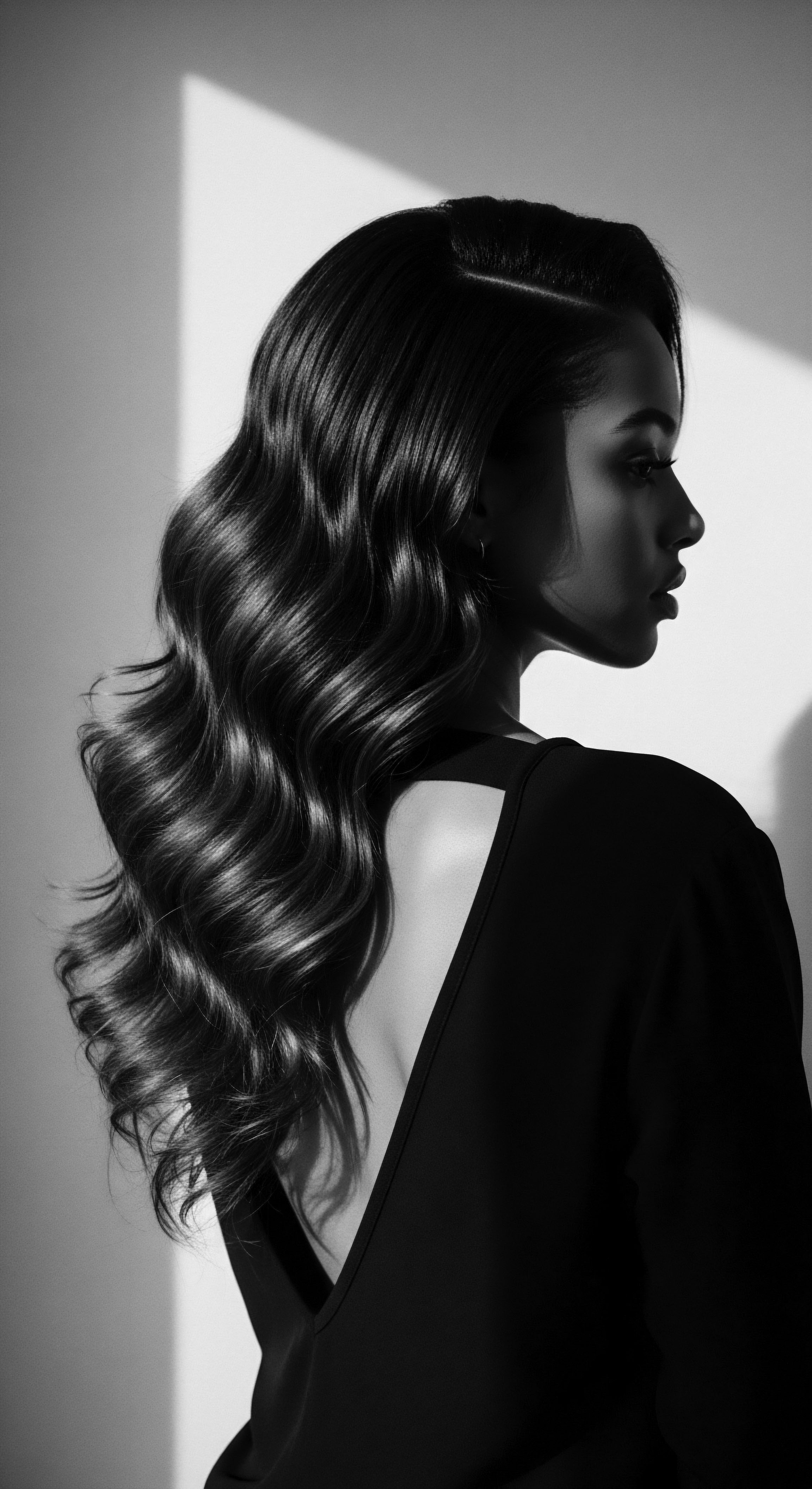
Styling as Preservation
The chosen styles themselves were frequently designed with preservation in mind. Styles like twists and dreadlocks were not merely aesthetic; they were methods of safeguarding the hair from external damage and reducing the need for daily manipulation. The practice of sectioning hair for these styles, often done with care and patience, minimized pulling and stress on individual strands, thereby reducing breakage.
The Himba people, with their distinctive hair adornments, embody a profound legacy of protective styling. Their use of otjize, the mixture of red ochre, butterfat, and aromatic resins, serves as a testament to their deep connection to the environment and their understanding of how to protect their hair from the harsh desert sun. This paste acts as a sealant, preventing moisture evaporation and providing a physical barrier against environmental elements, directly contributing to the strength and longevity of their hair. The meticulous application of otjize is a multi-day ritual, a process that speaks to the dedication and communal significance of hair care within their culture.
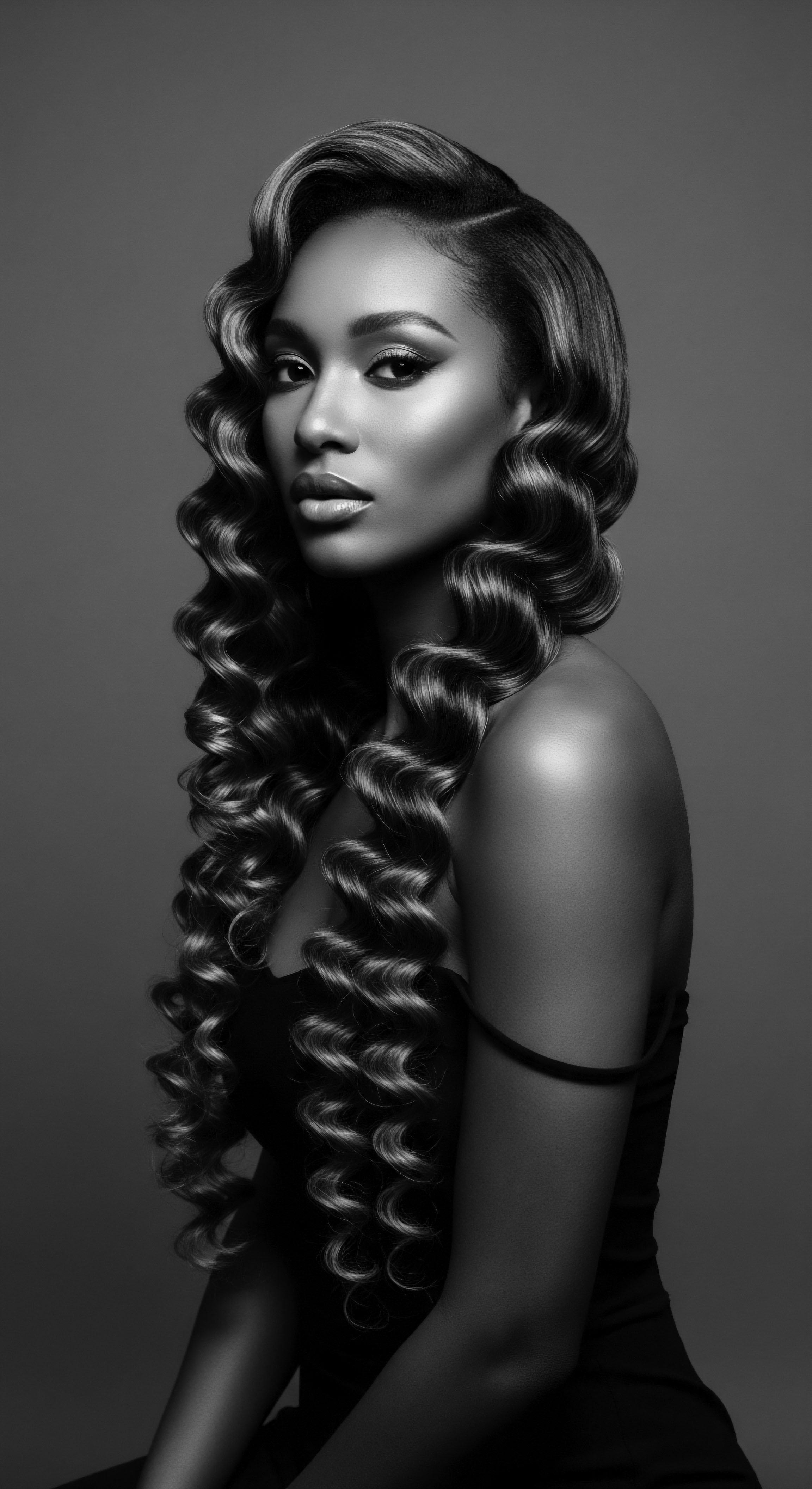
Relay
The historical narrative of textured hair rituals extends beyond the physical and the immediate; it flows into the currents of cultural identity, societal roles, and even forms of silent communication. These practices, honed over centuries, served as profound relays of ancestral knowledge, linking past generations to the present and shaping futures. The very notion of strand strength, in this context, reaches beyond mere tensile fortitude, encompassing the strength of collective identity and enduring heritage.

The Spiritual Connection to Hair Strength
In many African societies, hair was considered a sacred part of the body, a conduit to the divine and a repository of spiritual energy. The top of the head was often seen as the point of entry for spiritual forces, making hair care a deeply revered activity. This spiritual lens imbued hair rituals with a significance that transcended physical beauty. When hair was treated with such reverence, it was cared for with a profound sense of purpose, which inherently led to practices that prioritized its health and strength.
Consider the Maasai warriors, whose long braids, grown during their warrior phase, symbolized their battle readiness and strength. This tradition highlights how hair, and its specific styling, was directly tied to a perceived augmentation of power and resilience within the community. Such associations meant that maintaining the health and integrity of these styles was not simply a matter of personal grooming but a reflection of one’s spiritual and social standing. The care invested in these styles became a spiritual act, strengthening the physical hair through consistent, intentional attention.

How Did Hair Become a Language?
Hair, particularly in African cultures, functioned as a sophisticated communication system. Styles conveyed messages about an individual’s identity, societal role, and personal beliefs. The intricacy of braids, their patterns, and the adornments incorporated into them, could communicate age, marital status, wealth, or even serve as a map to freedom during times of enslavement.
A powerful illustration of this communicative strength comes from the era of transatlantic enslavement. Enslaved Africans, stripped of many aspects of their cultural identity, adapted traditional braiding techniques to convey vital information. Braids were used to map escape routes or even to hide seeds for survival.
This adaptation of hair ritual, born of profound adversity, exemplifies the ingenuity and resilience embedded within Black hair heritage. The physical act of braiding, a ritual to preserve strands, became a vessel for collective liberation, underscoring hair’s role as a symbol of defiance and enduring strength.
The history of textured hair care reveals a remarkable continuity, where ancient wisdom and modern science converge to affirm the efficacy of time-honored practices for strand vitality.
This historical example, where braids served as maps to freedom (Cantrell, 2022), illuminates a profound connection between cultural practice and survival. It demonstrates that the practical advantages of protective styling extended far beyond physical health; they served as a testament to intellectual fortitude and the unwavering spirit of those who maintained their heritage in the face of unimaginable hardship.

Validating Ancient Methods through Modern Science
Contemporary hair science often validates the efficacy of these time-honored rituals. The understanding of ingredients like coconut oil’s ability to penetrate the hair shaft and reduce protein loss, or shea butter’s emollient properties in sealing moisture, aligns with the empirical knowledge held by our ancestors. The concept of protective styling, too, is affirmed by modern understanding of hair fragility and the need to minimize mechanical stress.
The importance of consistent hydration, a cornerstone of many historical practices, is now scientifically recognized as crucial for maintaining the elasticity and strength of textured hair. Dry hair is brittle hair, and the ancestral emphasis on water, oils, and humectants (like honey) directly addressed this fundamental biological need. The continuity of these principles across millennia speaks to their inherent effectiveness.
For instance, the use of rice water, a traditional practice from Asian cultures, has gained recent popularity for its hair strengthening benefits. It contains inositol, a carbohydrate that aids in elasticity and reduces surface friction, directly supporting strand strength. This echoes ancient practices across various cultures that intuitively understood the benefits of fermenting natural ingredients.
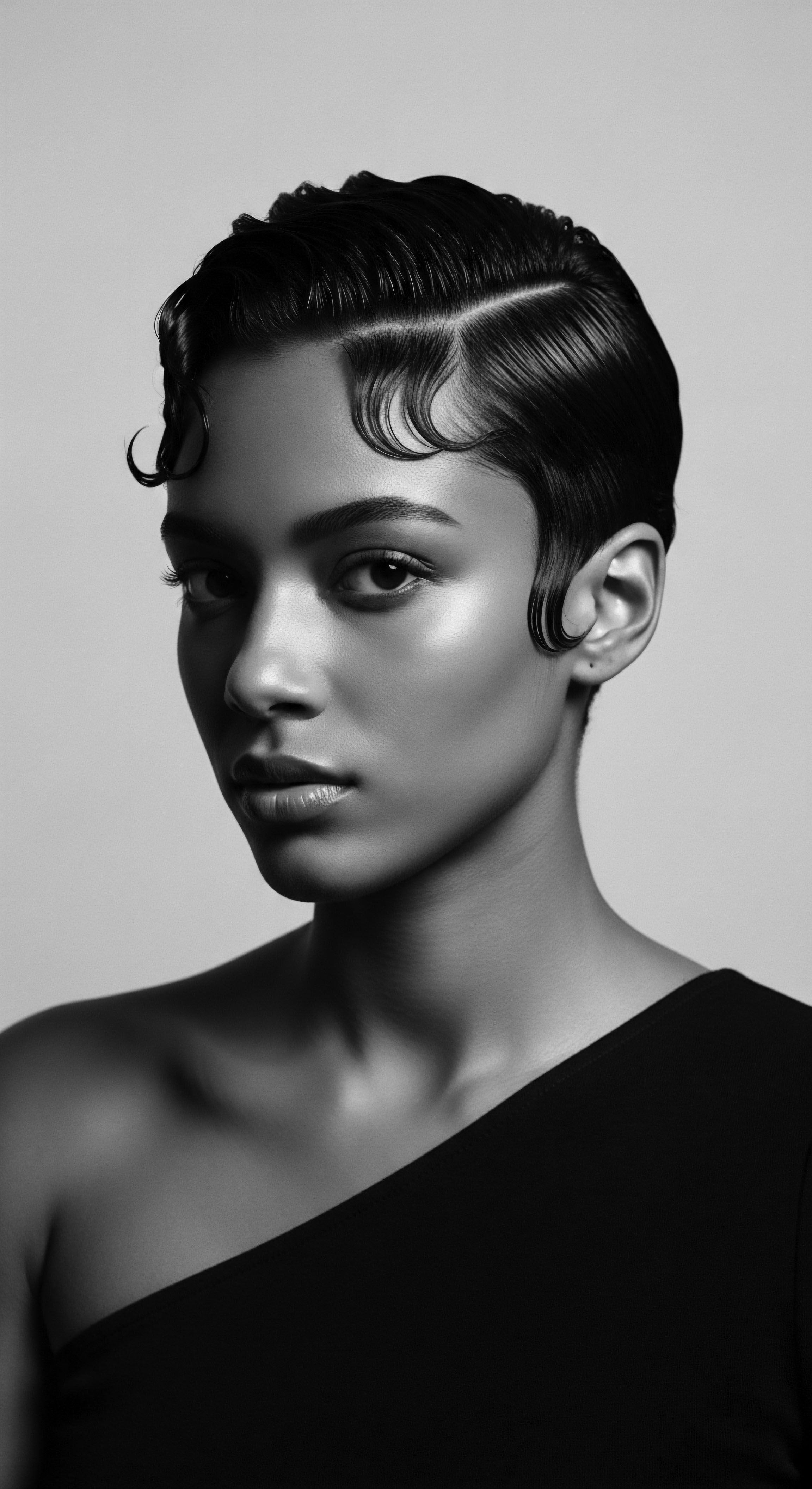
The Legacy of Scalp Care
Many historical hair rituals also centered on scalp health, understanding that a healthy scalp is the foundation for strong hair growth. Practices like scalp massages, often done with warming oils, were common. This stimulates blood circulation to the follicles, supporting growth and thickness. Ingredients like neem oil, with its antimicrobial properties, were used to address scalp conditions, reflecting an ancient understanding of the ecosystem of the scalp.
- Regular Oiling ❉ Historical practices consistently applied natural oils to the scalp and hair, providing lubrication and nourishment. This reduces friction and tangling, two major causes of breakage.
- Protective Styling ❉ Styles that tuck away the hair ends, like braids and twists, prevent mechanical damage and exposure to harsh elements, thereby preserving hair length and strength.
- Herbal Rinses ❉ Infusions of herbs like rosemary, sage, and nettle were used to cleanse, stimulate, and nourish the scalp, contributing to an optimal environment for hair strength and vitality.
- Natural Conditioners ❉ Ingredients such as aloe vera, honey, and certain clays provided natural conditioning, adding moisture and slip to the hair, making it more pliable and less prone to breakage.
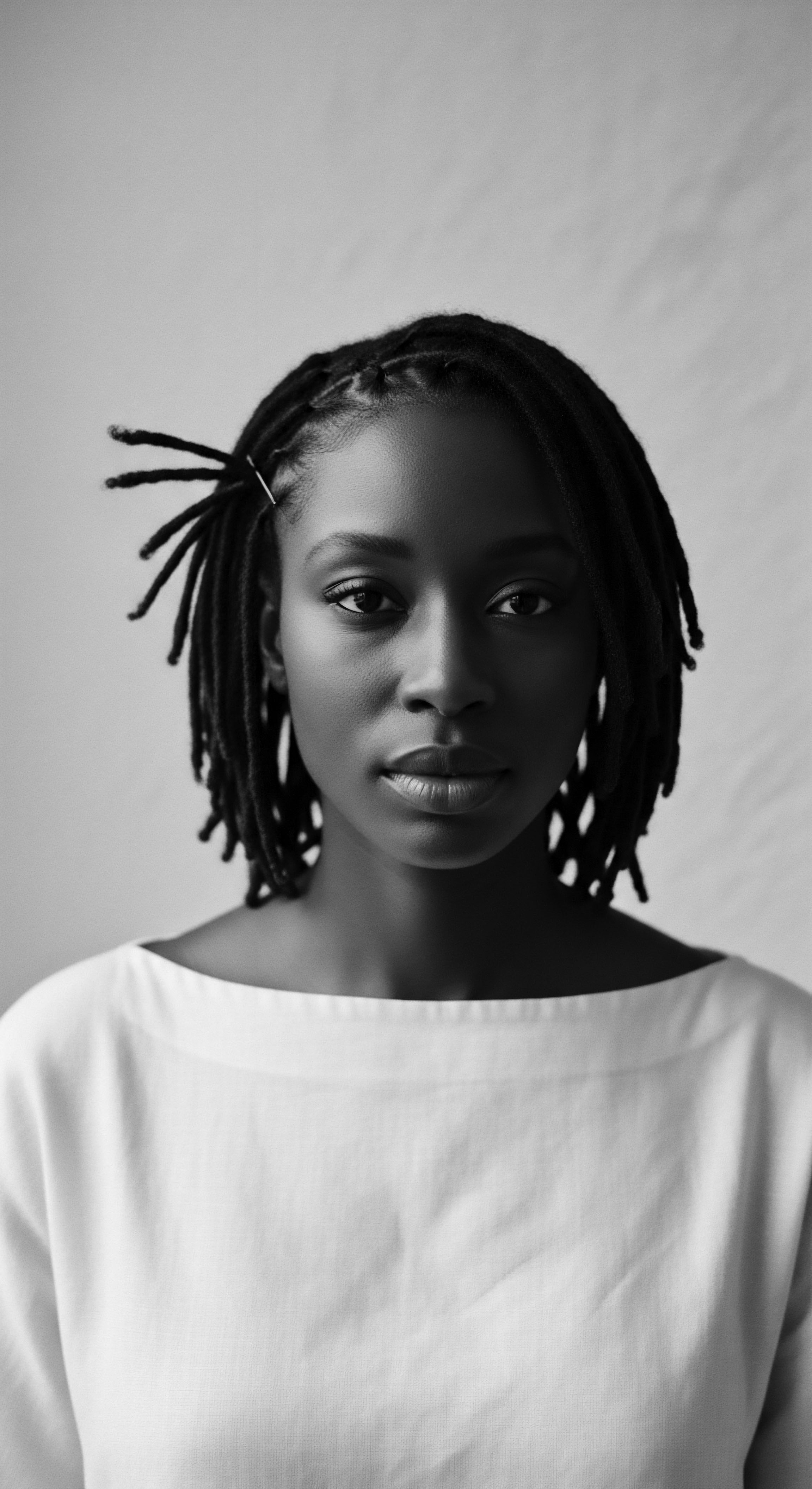
Reflection
As we step back from the intricate pathways of history, the question of what historical hair rituals improved textured strand strength yields an answer far deeper than a mere list of ingredients or techniques. It reveals a profound understanding of hair as a living archive, each strand a testament to cultural resilience, ancestral wisdom, and an unwavering connection to heritage. These rituals were never static; they were dynamic expressions of self and community, adapting, evolving, yet always rooted in the fundamental aim of nurturing the unique beauty of textured hair. The “Soul of a Strand” ethos resonates with this very essence, recognizing that our hair is more than keratin and bonds; it is a repository of stories, a canvas for identity, and a vibrant link to those who walked before us.
The practices of the past, whether it was the Himba’s protective otjize, the Chadian women’s chebe powder, or the widespread use of communal braiding sessions, were not simply about preventing breakage. They were about preserving a legacy, about the intergenerational passing of knowledge, and about finding strength in unity – both within the individual strand and within the larger human family. As we look forward, the echoes of these ancient practices continue to guide us, inviting us to treat our hair not as a challenge, but as a cherished inheritance, a continuous story unfolding with every coil and curl.

References
- Cantrell, M. (2022, June 29). Braids, Wigs, & Wash Day Routines ❉ 4 Black Women On The Meaning Behind Their Hair Rituals. Refinery29.
- Gumede, N. (2024, February 1). Nourishing Roots ❉ The Vital Role of Water in African Hair and Skin Care! AMAKA Studio.
- Mbilishaka, A. (2022). PsychoHairapy ❉ The Role of Hair in the Mental Health of Black Women.
- Ross, T. (1998). The Art of African Hairstyles.
- Walker, A. (1979). In Search of Our Mothers’ Gardens ❉ Womanist Prose. Harcourt Brace Jovanovich.
- White, S. (2022). Hair Story ❉ Untangling the Roots of Black Hair in America. St. Martin’s Press.
- Ziegler, C. (2018). Ancient Egypt Transformed ❉ The Middle Kingdom. The Metropolitan Museum of Art.
- Akintola, D. (2023). African Traditional Hair Care Practices and Their Modern-Day Relevance. Journal of African Studies.
- Green, J. (2021). The Science of Hair ❉ A Comprehensive Guide to Hair Biology and Hair Care.
- Rodgers, N. (2007). The Complete Illustrated Guide to Ancient Egypt.
